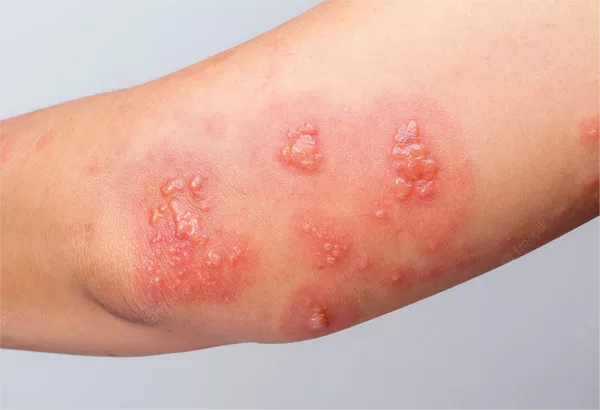Psoriasis, a chronic autoimmune condition characterized by red, scaly patches on the skin, affects millions of people worldwide. While various treatment options exist, including topical creams, oral medications, and systemic therapies, light therapy has emerged as a promising approach for managing this condition. Psoriasis lamps, particularly those utilizing ultraviolet (UV) light, have gained popularity as a non-invasive and effective treatment method. But do these lamps truly deliver on their promises? In this comprehensive article, we delve into the mechanisms of psoriasis lamps, their effectiveness, safety considerations, suitable candidates, proper usage, alternatives, and where to access them.
What are Psoriasis Lamps?
Psoriasis lamps, also known as phototherapy or light therapy, are devices that emit specific wavelengths of light to target psoriatic lesions on the skin. The two main types of psoriasis lamps are UVB (ultraviolet B) lamps and PUVA (psoralen plus ultraviolet A) lamps.
UVB lamps emit wavelengths between 290 and 320 nanometers, primarily targeting the epidermis, the outermost layer of the skin. They work by slowing down the rapid growth of skin cells and reducing inflammation associated with psoriasis lesions.
On the other hand, PUVA lamps combine exposure to UVA light (wavelengths between 320 and 400 nanometers) with the ingestion or topical application of a photosensitizing agent called psoralen. Psoralen sensitizes the skin to UVA light, making the treatment more effective. PUVA therapy is often reserved for cases of severe psoriasis that have not responded to other treatments.
Effectiveness of Light Therapy for Psoriasis
Numerous clinical studies have demonstrated the effectiveness of light therapy in managing psoriasis. UVB phototherapy, in particular, has been shown to significantly improve symptoms in many patients. A meta-analysis published in the British Journal of Dermatology found that UVB therapy led to a 68% reduction in the severity of psoriasis symptoms on average.
Similarly, PUVA therapy has shown promising results, especially in cases of moderate to severe psoriasis. A study published in the Journal of the American Academy of Dermatology reported that PUVA therapy achieved clearance or significant improvement in 85% of patients with moderate to severe psoriasis.
However, it’s essential to acknowledge that the effectiveness of light therapy can vary among individuals. While some may experience complete clearance of their psoriasis symptoms, others may only achieve partial improvement. Additionally, the duration of remission following light therapy can vary, with some patients experiencing long-term relief and others requiring ongoing maintenance treatments.
Limitations and Potential Side Effects
Despite its efficacy, light therapy for psoriasis is not without limitations and potential side effects. One of the primary concerns is the risk of skin damage and increased susceptibility to skin cancer due to prolonged exposure to UV radiation. To mitigate these risks, treatment protocols typically limit the duration and frequency of light exposure.
Common side effects of light therapy may include redness, itching, and dryness of the skin, which are usually temporary and resolve with continued treatment. In some cases, however, more severe side effects such as blistering, sunburn, and hyperpigmentation may occur, particularly with improper usage or overexposure to UV radiation.
Furthermore, certain individuals may not be suitable candidates for light therapy due to underlying health conditions, such as a history of skin cancer or photosensitivity disorders. It’s crucial for healthcare providers to assess each patient’s medical history and risk factors before recommending light therapy for psoriasis.
Who are Psoriasis Lamps Suitable for?
Psoriasis lamps are most suitable for individuals with mild to moderate psoriasis that has not responded adequately to topical treatments alone. They may also be beneficial for patients with localized psoriasis lesions or those who prefer non-invasive treatment options.
UVB phototherapy is particularly effective for treating plaque psoriasis, the most common form of the disease, as well as guttate psoriasis and scalp psoriasis. PUVA therapy is often reserved for patients with more severe or widespread psoriasis that has not responded to other treatments.
However, certain contraindications may preclude individuals from undergoing light therapy, including pregnancy, photosensitivity disorders, and a history of skin cancer. It’s essential for patients to discuss their medical history and any potential contraindications with their healthcare provider before starting light therapy.
How to Use Psoriasis Lamps Safely and Effectively
To use psoriasis lamps safely and effectively, it’s important to follow prescribed treatment protocols and recommendations from healthcare providers. Treatment parameters, including the duration and frequency of light exposure, may vary depending on the type and severity of psoriasis, as well as individual factors such as skin type and tolerance to UV radiation.
Typically, patients undergo light therapy sessions several times per week, with exposure times gradually increasing over time. It’s essential to protect unaffected areas of the skin from exposure to UV radiation using protective clothing or sunscreen during treatment sessions.
Patients should also be vigilant for any signs of skin irritation or adverse reactions and report them to their healthcare provider promptly. Additionally, regular monitoring and follow-up appointments are necessary to assess treatment progress and adjust the treatment plan as needed.
Alternatives to Psoriasis Lamps
While light therapy is an effective treatment option for many patients with psoriasis, it’s not the only approach available. Alternative treatments for psoriasis include topical creams and ointments containing corticosteroids, vitamin D analogs, or retinoids, which can help reduce inflammation and promote skin healing.
Oral medications such as methotrexate, cyclosporine, and acitretin may be prescribed for patients with moderate to severe psoriasis who have not responded to other treatments. Biologic therapies, which target specific components of the immune system involved in psoriasis, are another option for individuals with severe or treatment-resistant psoriasis.
Ultimately, the choice of treatment depends on various factors, including the severity of the psoriasis, the patient’s medical history, and their preferences regarding treatment options. Healthcare providers work closely with patients to develop personalized treatment plans that address their unique needs and goals.
Where to Get Psoriasis Lamps
Psoriasis lamps are available at dermatologist offices, specialized clinics, and certain healthcare facilities equipped with phototherapy units. Patients may undergo light therapy sessions under the supervision of trained healthcare professionals, who can monitor their progress and ensure the safe and effective delivery of treatment.
Additionally, some individuals may opt for at-home phototherapy devices, which allow for greater convenience and flexibility in managing psoriasis symptoms. These devices are typically prescribed by a healthcare provider and come with instructions for proper usage and safety precautions.
It’s essential for patients to consult with their healthcare provider before purchasing or using an at-home phototherapy device to ensure that it’s suitable for their needs and compatible with their treatment plan.
Conclusion
In conclusion, psoriasis lamps offer a safe and effective treatment option for many patients with psoriasis, particularly those with mild to moderate symptoms that have not responded to other treatments. UVB and PUVA therapy have been shown to significantly improve psoriasis symptoms in numerous clinical studies, although individual responses may vary.
However, it’s crucial to use psoriasis lamps responsibly and under the guidance of a healthcare provider to minimize the risk of side effects and maximize treatment benefits. Patients should discuss their treatment options with their healthcare provider to determine the most appropriate approach for managing their psoriasis and achieving long-term skin health and well-being.

























